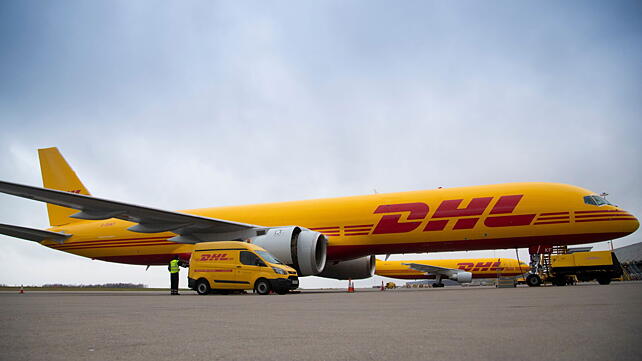
Decarbonising the transportation sector remains the major focus of governments and corporations worldwide, with various initiatives underway to limit global warming to well below 2° C, as outlined in the Paris Agreement.
Unlike the ground transport sector, which is witnessing rapid adoption of electric vehicle technology, in the aviation transport sector, the need to fly hundreds of passengers over thousands of km has meant that battery technology will need to evolve exponentially, if it is to power long-distance commercial flights. But this is not expected before 2040.
As a result, there is no near-term alternative to liquid hydrocarbon fuels apart from Sustainable Aviation Fuels (SAF) for the aviation sector. SAF offers lifecycle greenhouse gas emissions that could be at least 80% lower than traditional jet fuel.
More than 300,000 flights using SAF have been flown by approximately 45 airlines since 2016. Extensive testing has also meant that today, SAF can safely be mixed with conventional jet fuel, using the same supply infrastructure and without the need to adapt the aircraft or its engines.
However, the current availability of SAF is insignificant at less than 1% of total jet fuel demand. New production coming online will result in a three to four fold increase in SAF production with 100 million litres to be produced in 2021.
According to the International Air Transport Association (IATA), if all options to increase SAF production are explored, up to one billion passengers can have flown on a SAF-blend flight by 2025 and with appropriate policy support, penetration should be approaching 2% (approximately seven billion litres).
The challenge, however, is the plentiful availability of relatively cheap Aviation Turbine Fuel (ATF), which keeps demand for SAF low and deters companies from investing in increased production capacity, which could lower prices. Growth in use of SAF can reduce costs, and as an example, in the 90s, power from wind and solar cost 10 times more than what it does today.

A new approach
The Clean Skies for Tomorrow (CST) initiative, which is led by the World Economic Forum (WEF), has been driving the agenda for sustainable aviation under its ‘Shaping the Future of Mobility’ platform. WEF, in collaboration with PwC Netherlands and RMI, released a white paper on June 30, 2021 titled ‘Powering Sustainable Aviation Through Consumer Demand: The Clean Skies for Tomorrow Sustainable Aviation Fuel Certificate (SAFc) Framework’. The report aims to create a framework that allows aviation customers to take ownership of their emissions reduction goals.
Global logistics giant, DHL has joined United Airlines’ Eco-Skies Alliance programme to help fund the purchase of SAF and utilise a ‘book and claim’ mechanism and test the SAF certificate concept.
“Through this partnership, we will be able to show how a ‘book and claim’ mechanism for sustainable aviation fuel certificates can help airlines, freight forwarders, and shippers work together to accelerate the transition to a low-carbon, ultimately zero carbon emissions transport sector,” said Tim Scharwath, CEO, DHL Global Forwarding, Freight.
DHL Global Forwarding is presently running a pilot programme with select customers and has plans to make it available to all its customers, later this year. Along with alliance partners, DHL Global Forwarding will purchase the emissions reductions from 12.87 million litres of SAF in 2021, which will eliminate approximately 31,000 metric tonne of greenhouse gas emissions (on a lifecycle basis), as compared to the use of conventional jet fuel.

“When companies as large as DHL recognise the value in switching to SAF, we’re another step closer to establishing SAF as a long-term, permanent solution for aviation,” said Jan Krems, President, United Cargo.
DHL is to invest approximately €7 billion through 2030 in clean operations, with plans to increase its use of SAF to more than 30% and electrify 60% of its last-mile delivery vehicles by 2030. It aims to reduce all logistics-related emissions to zero by 2050.
What are sustainable aviation fuel certificates (SAFc)?
A SAFc is a virtual solution to a physical problem, allowing companies and individuals to purchase them. This will allow them to meet their climate goals, while simultaneously funding the ramp-up of SAF production. A SAFc is generated for every metric tonne of SAF produced by fuel producers using sustainable feedstock. The fuel producers can sell the physical fuel and the virtual energy attributes as SAFc.
Airline and aircraft operators that purchase SAF can claim the value of the direct emissions reduction, which falls under Scope 1 of the airport Carbon and Greenhouse Gas (GHG) emissions category. Air transport customers can use their SAFcs to buy the value of the indirect emissions reduction under Scope 3 of the airport GHG Emissions Category.
The digital system used to track and transfer emissions reductions from SAF across the value chain is known as ‘book and claim’. This allows SAFc’s to be purchased and sold without having to physically trace the fuel through the supply chain. Modelled after Energy Attribute Certificates (EAC), SAFcs are expected to accelerate demand for SAF, just as EAC did for renewable energy.
Note: Federal Aviation Administration (FAA) Airport GHG Emissions Inventory Categories:
| Scope 1 | Emissions from airport-owned or controlled sources. Examples include airport-owned power plants that burn fossil fuel, conventional vehicles that use gasoline, or conventional GSE that use diesel fuel. |
| Scope 2 | Indirect emissions from the consumption of purchased energy (electricity, heat, etc.) |
| Scope 3 | Indirect emissions that the airport does not control but can influence. Examples include tenant emissions, on-airport aircraft emissions (typically, after an aircraft is parked on the apron), emissions from passenger vehicles arriving or departing the airport, and emissions from waste disposal and processing. |